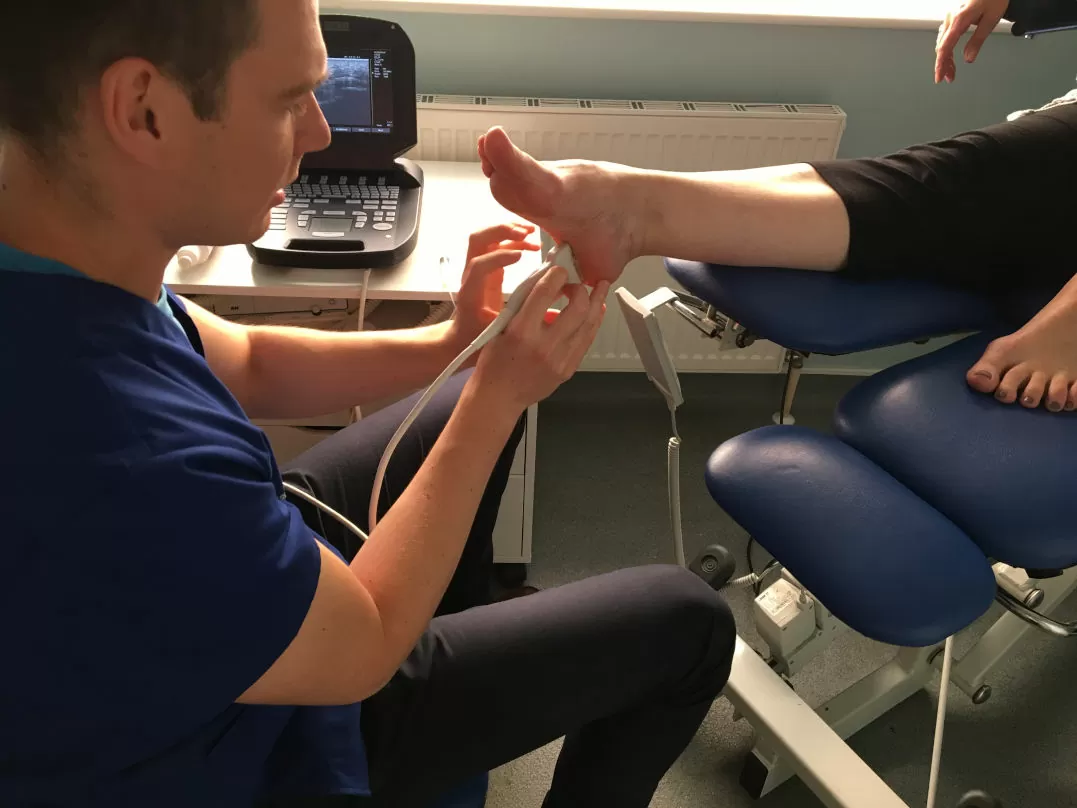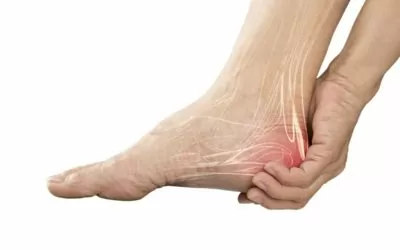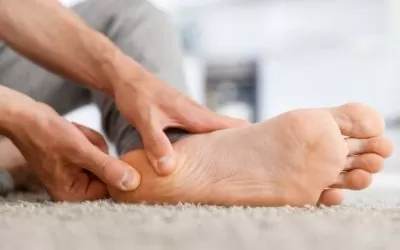Diagnosing Heel Spurs
A Heel Spur is a debilitating condition which causes discomfort across the entire foot. Typically a quarter of an inch in length, heel spurs are caused by the development of a bony growth known as a calcium deposit, extending between the heel bone and arch. Whilst it may normally appear at the front of the heel, heel spurs can often expand to affect other parts of the foot as well.
Book Your Initial Consultation with Ultrasound Appointment for £60.00
What causes a Heel Spur?
Heel Spurs are typically brought on as a result of long-term muscle and ligament strain. Over time, excessive strain on your ligaments can stretch out the heel’s soft tissues and wear them out.
Since Heel Spurs are a progressive condition, they won’t appear suddenly after a workout or sports event – a common misconception. They will often be brought on as a result of repetitive stress from walking, jumping or running on hard surfaces.
Here are some other causes of heel spurs:
- Heel Bruising.
- Gender. Heel Spurs are typically more common in women than men.
- Age. Heel Spur onset increases in likelihood as you get older.
- Weight. Heel spurs tend to be more common in overweight individuals.
- Walking Gait Issues.
- Arthritis.
- Incorrect Footwear. Overwearing flimsy footwear like flip-flops can heighten the risk.
What are the common symptoms of a Heel Spur?
The most common symptom of a Heel Spur is a feeling of pain, inflammation and swelling at the front of the heel. The affected area is also often warm to the touch and is said to feel as if you’ve stood on a knife when first standing up. Throughout the rest of the day, the pain will lessen into more of a dull ache, with the point of tenderness at the bottom of the heel making it difficult to walk barefoot.
Over time, Heel Spur pain can spread to other areas of your foot away from the heel. Eventually, a small bone-like protrusion may start to appear, which then helps confirm the presence of a spur.
How are Heel Spurs diagnosed?
Depending on the severity of the Heel Spur, it can be fairly difficult to diagnose one accurately. This is because the condition shares a lot of similarities with plantar fasciitis, in terms of the type of pain felt and the area which causes the issue. One key difference comes through the longevity of each condition though; heel spurs are there permanently, whereas plantar fasciitis can subside over time.
Another diagnostic difficulty comes from the fact that some heel spurs don’t cause any symptoms at all. Research shows that only 50% of people with heel spurs actually experience any sort of pain from them.
Detecting a heel spur is, therefore, difficult to do on your own, so if you’re worried that you might have one, you should contact a professional. Our podiatrists here at the Sussex Foot Centre are specially trained to detect a wide range of foot conditions. Listed below are some of the main diagnostic methods we employ:
- X-ray. An X-ray allows your podiatrist to rule out other causes of foot pain, such as a breakage or stress fracture. They also enable underlying bone-like growths to be easily identified.
- Heel Spurs Ultrasound. The most accurate method for identifying a heel spur comes via a foot ultrasound. This painless procedure produces accurate images of your foot’s interior muscles and tendons, allowing your podiatrist to visualise any issues.

What is the process for a heel spurs ultrasound?
A ‘Heel Spurs Ultrasound’ is entirely painless and only takes approximately 20 minutes.
The technique is used to produce accurate images of muscles, ligaments, joints and tendons within your lower limbs. Visualising these internal components makes it a lot easier for your podiatrist to see the extent of any issues at hand.
This is what the process typically involves:
- A small quantity of jelly-like gel will be applied to your ankle/calf area.
- Your podiatrist will then move a handheld device across the affected area. This device will use sound waves to capture internal images of your foot and heel. These images will then be shown on an ultrasound monitor in real-time, allowing you to see exactly what your podiatrist sees.
- Using these images, your podiatrist will then be able to quickly identify whether there is an issue. If there is, they will then determine what the best course of treatment is for you.
- Your podiatrist will then talk through with you what they found, and discuss what the next best steps will be.
- You will then start on the appropriate treatment plan, as recommended by your podiatrist.
How are Heel Spurs treated?
Treating a Heel Spur depends on the severity of the issue. However, the most common treatment options typically include:
- Ice. This can help to reduce swelling.
- Painkillers. Anti-inflammatory painkillers reduce pain and inflammation and help with swelling.
- Stretching. Podiatrist-recommended stretching exercises help strengthen affected muscles and tendons.
- Rest. Avoiding putting weight on your heel gives it the chance to properly recover.
- Orthotics. Fitted to the exact contours of your feet and manufactured on-site, orthotics are designed to alter the load on your foot and heel, helping ease your pain.
If you are struggling with pain in the base of your heel or can feel a bone-like lump protruding out, contact us today to book a heel spurs ultrasound. Our team here at the Sussex Foot Centre are specially trained to diagnose an array of lower limb-related issues.
Achilles Tendon Pain
The Achilles Tendon which Is also named the Calcaneal Tendon is avery durable, strong band of tissue. It connects the calf muscles tothe heel bone, and it is the strongest tendon in the human body, capable of holding up to 3 times its body...
Plantar Fasciitis: What is it?
Plantar Fasciitis is a common condition treated at The Sussex Foot Centre. ThePlantar Fascia is a large band of tissue which is situated along the bottom ofthe foot. Medical research states that Plantar Fasciitis affects up to 10% of thepopulation. It is therefore...
Calling All Runners
Calling all runners, we want to hear from you! If you are experiencing any aches and pains during or after your run, we would love to talk to you and discuss exactly how we can help. For a limited period of time, we will be...
BOOK AN APPOINTMENT
Follow the form below to get through directly to one of our Podiatrists at the practice or to request an appointment.
Or call — 01444 453874
"*" indicates required fields



